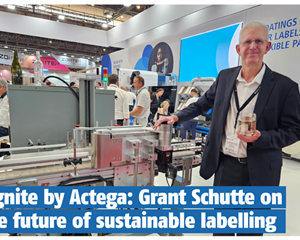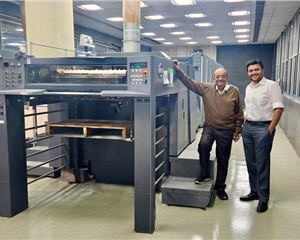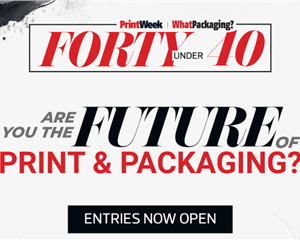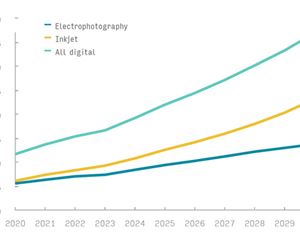Digital printing in the spotlight at PrintWeek Awards — The Noel D’Cunha Sunday Column
The PrintWeek Awards are back. As we await the entries for the 2025 edition, this column takes a look at the previous winners in different categories, all of whom employed digital technology to create award-winning products.
01 Aug 2025 | By Noel D'Cunha
Print-on-demand (POD) was introduced in India in the late 1990s, with Xerox’s Safida often cited as one of the earliest examples around 1999. However, it took until the late 2000s for POD to gain wider acceptance in the industry.
According to an industry veteran who has worked with two leading digital press manufacturers, the market began to form in 2003, but the real turning point came in 2018. He stated that 2010 or 2012 did not mark a significant inflexion, but rather, momentum gathered after the Indian government imposed a ban on the import of refurbished machines in 2017. As a result, the jobber market saw a notable surge in activity.
In recent years, digital printing has become a preferred option for short-run and variable data jobs. PrintWeek’s internal data projected that the number of digital presses in India would reach approximately 2,300 by the end of 2023. The estimated revenue from equipment sales in that year stood at around INR 450-crore, which represented the highest annual figure to date. Industry expectations have indicated that growth will continue throughout 2024.
This shift in trajectory has been driven by four main factors. There has been a clear increase in the number of installed machines. Volumes per machine have also gone up. The year 2024 has been marked by drupa, a major event where new technologies and product innovations are unveiled. Additionally, there has been a renewed focus on finishing, particularly in binding processes.
Digital Printer of the Year
In this category, judges are looking for companies that demonstrate strong colour output and creative use of digital printing technology.
Silverpoint Press and Letra Graphix were declared joint winners in this category in 2024.
Silverpoint Press submitted four projects for consideration.
.png)
The Club 10 Gymkhana brochure featured a Mont Blanc white 130-gsm cover, along with inner pages on the same weight paper. Gold foil stamping was applied, and the cover included both embossing and debossing to enhance its finish.
The Crown Coin brochure was digitally printed and included embellishments such as gold foil, spot UV, and satin aqueous varnish.
For the India Leadership Council book titled Decoding D-Code, the company created a personalised design to highlight individual profiles.
The fourth entry was the Dream Dare Deliver book for Microland, which was section-sewn and bound in hardcover. The design made use of white space alongside vibrant colour spreads, giving the book a clean, modern look.
GMG colour management tools were employed to ensure consistent and accurate colour reproduction across all samples.
Letra Graphix submitted four digital label samples.
.png)
The Red Wine Organic label was printed on PP silver, which gave the label a metallic finish. The design included textured veins to create a tactile effect. The metallic surface enhanced the pink gradient and complemented the wine’s visual identity.
The Mountain Reserve label featured a 1,200 x 1,200-dpi image, with details that created a three-dimensional appearance. Judges noted the effective use of gloss and matt finishes combined with foiling to produce a result suitable for premium packaging.
The Nefertum label was printed on black paper and used gloss and matt effects across different areas of the design to simulate embossing and debossing, without the use of traditional techniques. One judge observed that this gave the label a rich, textured look.
The Beer of the Sun label was printed at a high resolution of 1,200 dpi, which resulted in exceptional sharpness and detail.
Digital Photo Album Printer of the Year
In this category, the judges are seeking companies that can demonstrate strong colour results, effective use of substrates, and attention to detail in album fabrication.
Photopark Digital Press was the winner in this category for 2024.
Photopark distinguished itself by offering a comprehensive product range that included boxes, covers, calendars, mini books, portraits, bags, and album presentations.
.png)
Each design was customised with additions such as lace, ribbons, and laser-cut elements. The albums were printed on Luster 240-gsm media at a resolution of 2,400 dpi. Post-press enhancements were carried out by Photopark’s in-house team, with minimal reliance on automated machinery.
The album produced for Roopesh Pai featured a central image on the cover, framed with dark blue suede rexine. This material was also used for the box.
The album for Lights on Creation included a mini book, a tabletop calendar, and a pen drive compartment, all placed beneath the main album. A distinctive feature was the triple wood circle laser cut applied to both the cover and the box lid.
The album created for Adam Lights, a photographer specialising in baptism events, followed a white colour theme. Its cover included a large three-quarter acrylic glass panel with a printed pattern that added visual interest.
The album for Weva used a two-level box structure. The top section included a calendar and portraits, while the lower compartment housed the main album.
Fine Art Printer of the Year
In this category, the judges are evaluating fine art books, catalogues, and limited-edition prints that demonstrate high standards of origination and printing.
Prodon Enterprise and Archana Advertising were named joint winners in 2024.
Prodon Enterprise used a Mitsubishi 1000 LS four-colour press with an inline coater to produce its entries.
.png)
The books Beyond the Shadow and Life Drawing, Studies and Sketches for artist Yuri Jain were printed on 160-gsm Rendezvous Hi Print paper with a matte coating. These hardbound books were presented in slipcases.
.png)
Fantasy was printed for the auction house Saffronart on 160-gsm Rendezvous Natura paper with matte coating and was packaged in a fibreboard box with a central cutout; and for the Saffronart Summer Online Auction catalogue, Prodon used section sewing and perfect binding, and applied three-dimensional foil embossing on the cover.
.png)
A box set was also created for Akara Art, which contained Akara Modern and Akara Contemporary, printed on 130-gsm Rendezvous Natura paper with satin coating. These books were bound in hard case with cloth covers and featured foil debossing.
.png)
Archana Advertising submitted a book titled Raza for Vadehra Art Gallery, printed on a Konica Minolta AccurioPress and finished with an aqueous coating. The book included around 600 old photographs. Since the original images were unavailable, Archana relied on digital restoration techniques to match the visuals.
MF Husain: The Journey of a Legend was produced for the Stellar International Art Foundation using a Komori Enthrone press and Rendezvous paper. Post-press processes included foil stamping, UV, and debossing. This book featured early works from the artist’s private collection.
Looking Back by Sudip Roy was printed using Komori, Heidelberg, and Mitsubishi presses on rough-gloss fine-texture paper. The artist supplied the original paintings, which were photographed at Archana’s studio and colour-matched during processing.
Sujata Bajaj’s Ganapati for Galerie Patrice Trigano was printed on the same types of presses and paper, with post-press treatments such as UV on the cover and foil on the slipcase.
The 15th edition of the PrintWeek Awards will take place on 13 October 2025 at The Westin Mumbai Powai Lake. Those wishing to enter can express interest here.
For assistance during the process, entrants may contact avinash.bhakre@haymarket.co.in or call +91 99303 51282.












 See All
See All